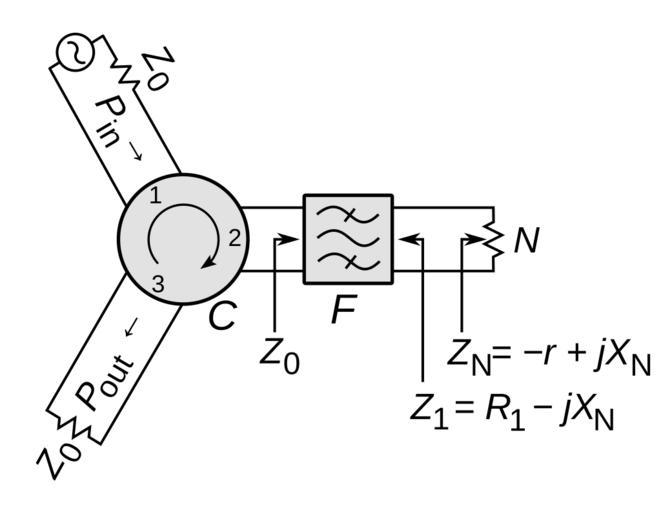MAKE A MEME
View Large Image

| View Original: | Reflection amplifier.svg (1516x1174) | |||
| Download: | Original | Medium | Small | Thumb |
| Courtesy of: | commons.wikimedia.org | More Like This | ||
| Keywords: Reflection amplifier.svg reflection amplifier which uses a negative resistance diode such as a tunnel diode Gunn diode or IMPATT diode to provide gain A one-port negative resistance device like a diode can amplify but the amplified output signal must pass out of the device through the same pair of terminals as the input signal passes in so without some way of separating the signals the amplifier can suffer from feedback problems The reflection amplifier uses a nonreciprocal device called a circulator to separate the signals The circulator C is a solid state component with three ports which passes signals in circular order; a signal applied to port 1 is sent to port 2 and similarly 2 to 3 and 3 to 1 In this reflection amplifier the input signal P<sub>in</sub> is applied to port 1 a DC-biased negative resistance diode N is attached to port 2 through a filter F and the output P<sub>out</sub> taken from port 3 The input signal is sent from port 1 to the diode at port 2 but the returning amplified signal from the diode is routed to port 3 so there is little coupling from output to input The purpose of the filter F is to present the correct impedance to the diode which determines the amplifier's gain Since diodes have significant reactance capacitance X<sub>N</sub> at high frequencies the filter also cancels this reactance with a conjugate reactance to prevent reflections 2014-07-30 17 36 03 own Chetvorno cc-zero Uploaded with UploadWizard SVG electricity Circulator circuits Negative resistance | ||||